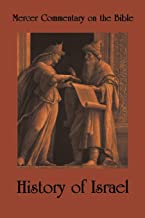Answers in Genesis, the Christian organization that owns the Creation Museum in Kentucky, has developed a theme park called Ark Encounter in which they have built a life-sized reconstruction of Noah’s Ark.
The appeal of Answers in Genesis is that they take a literal interpretation of the story of Noah’s Ark and try to present a literal recreation of what they believe happened with Noah and his family.
In an article published in The Atlantic titled “The Obsession With Biblical Literalism,” Carmine Grimaldi, the writer of the article, tells how Creation in Genesis used biblical literalism and creative fiction in order to recreate Noah’s Ark.
Below is a brief excerpt from the article in which Answers in Genesis describes how Noah and his family survived in the Ark:
In over 100 exhibits on the ship, visitors learn how each difficulty might have been surmounted: How could eight people feed so many animals? Through an elaborate system of drains and chutes, as illustrated by an interactive video. And what about the stench? Solved easily enough-Noah just needed a ventilation system powered by the tides.
And the daily tons of animal waste? Noah could dispose of that with a treadmill-cum-conveyor belt powered by elephants. But how did he fit elephants on the ship? And all those dinosaurs? They were babies at the time.
And if visitors doubted that a wooden ship carrying all this cargo could withstand an apocalyptic flood, a placard explains that the ship’s dimensions, as specified in Genesis, has been proven by naval engineers to be the perfect compromise between comfort, stability, and strength. In one video, entitled “Sink or Swim,” visitors can watch animated simulations of ships from other diluvial myths being tossed in rough water. They all sink, often to the sound of terrified screams.
As for the creative fiction used to tell Noah’s story, take this description of the family’s living quarters as promoters believed it existed in the Ark:
For self-proclaimed literalists, the ark includes a striking amount of fabrications and fictionalizations. Consider, for example, one of the most popular exhibits, where visitors can walk through the family’s living quarters. At the entrance are two placards, one entitled “Artistic License,” and the other “Why Are the Living Quarters So Nice?” In each of the following rooms, visitors can see mannequin renderings of the family and read short bios. Take Ham’s wife Kezia, who likes “dressing up and looking her best, although the Ark’s busy schedule provides few opportunities for this.” But none of these details appear in the Bible. Genesis never takes a charming detour through the family’s hobbies. It never even reveals the names of the women on the ship. And yet these details are integral to the experience of Ark Encounter. It enlivens and stabilizes the text with the incontrovertible hardness of sets, props, and mannequins.
Some people believe this recreation of Noah and the Ark proves the biblical story, but I have my doubts about the value of this fictionalized retelling of the biblical story. I believe this attempt to provide a literal/fictionalized interpretation to Noah’s story gives a false interpretation of what really happened and detracts from the main purpose of the biblical story: God’s love for humanity and his desire to save people from destruction.
Claude Mariottini
Emeritus Professor of Old Testament
Northern Baptist Seminary
VISIT MY AMAZON AUTHOR’S PAGE
BUY MY BOOKS ON AMAZON (Click here).
NOTE: Did you like this post? Do you think other people would like to read this post? Be sure to share this post on Facebook and share a link on Twitter or Tumblr so that others may enjoy reading it too!
I would love to hear from you! Let me know what you thought of this post by leaving a comment below. Be sure to like my page on Facebook, follow me on Twitter, follow me on Tumblr, Facebook, and subscribe to my blog to receive each post by email.
If you are looking for other series of studies on the Old Testament, visit the Archive section and you will find many studies that deal with a variety of topics.

















There are so man problems with the flood story that I fully understand why non-believers are turned off by it. Two items bother me most. It is not possible to place 60 million species times 2 in one ship, even our newest super tanker. Each species is made up of varieties, but let’s not worry about them. The other problem is the obvious destruction of plant life. There are several seed storage sites in the world which take up more space than the ark and we still don’t have all seeds collected. We haven’t even identified all the species yet, let alone collected seeds.When did Noah have time to get to the Amazon River and collect millions of seeds and animals and take them back to the ark?
Yet, every culture has a flood story. It is clear that flooding occurred, just not at the same time–not world wide. The Bible alone uses the idea to tell us that God loves us and will save us.
Mike Lawrence
LikeLike
Mike,
You make several good points about a literal interpretation of the flood story. I could add some more. The problem with a literal interpretation is that it creates many problems for which there are no answers, no matter the explanations proposed for these difficult questions.
Thank you for your comment.
Claude Mariottini
LikeLike
Why do I not see the comments that have been entered in other threads?
LikeLike
Gene,
They should be made visible now.
Claude Mariottini
LikeLike
Love your article, totally scoff at the idea of their literal ark.
By the by, as a retired maritime expert, the given dimensions of the ark do very much offer a stable platform. But high tides flushing waste? A high tide lifts all, including the ark. The waterline would remain the same.
LikeLike
Fred,
Thank you for reading my blog. I am not a maritime expert as you are, thus, I welcome your views. Their attempt to defend the Bible with a literal interpretation brings many problems, one of them is the issue with the dinosaurs.
Claude Mariottini
LikeLike
Dinosaurs…. God is going to create a NEW heavens and earth. Right where we stand now. This world will be gone and forgotten. (Isaiah 65:17) God also made this current world to become a NEW heavens and earth to replace the world dinosaurs lived on. God changes classrooms to teach with. We ARE SHOWN NOW that there will be a new heavens and earth coming. The GAP understanding of Genesis reveals that the New heavens and earth Isaiah spoke of was not the first time this happens.
LikeLike
Gene,
I am sorry to say, but the “gap theory” finds no support in the Bible.
Claude Mariottini
LikeLike
The problem with the flood is that the reader is assuming the earth has always been the same. Genesis 11 explains that man was refusing to be scattered over the earth. That it was his natural instinct to herd into one area. In the time of the Genesis flood man was in his infancy. Low in population. What the Bible calls “the whole earth” was contained in a very small area on the planet. For, Genesis 11:1 – tells us that “the whole earth” spoke one language. That “whole earth” as the Bible describes it was located together on a single plain!
Genesis 11:2 – 2 It came about as they journeyed east, that they found a plain in the land of Shinar and settled there.”
The Genesis flood most likely only needed to be the size of a large Texas county. For man was in his infancy. The genealogies tell us that men were not having their first child until after reaching over 100 years in age. We first must get a right perspective of what took place. Man wasn’t everywhere on earth. And God’s intent of the flood was to destroy evil mankind. Small flood. But, that small flood destroyed the entire (known) earth. Only animals indigenous to where man was living was needed to go upon the ark. Animals on the other side of the earth were not touched by the flood designed to destroy the known human race. The flood was God extermination of evil man…. not all animal life.Animals were in a sense collateral damage.
Often times we make the mistake to project our current world view in the assumption all things have always been the same. That’s why the Flood account is seen as fantasy. But, God’s Word is not fantasy. So, we must seek and find answers. grace and peace…
LikeLike
Gene,
Your comment makes sense, but most people will not accept is.
Claude Mariottini
LikeLike
The GAP theory is valid. Its just not well explained in certain areas. Prehistoric worlds were replaced by our new heavens and new earth. It was replaced. Just like our present earth is destined to be replaced.
I am about to create new heavens and a new earth; the former things shall not be remembered or come to mind (Isaiah 65:17). For as the new heavens and the new earth, which I will make, shall remain before me, says the LORD; so shall your descendants and your name remain (Isaiah 66:22).
God has a system. Replacing one created world with another. The GAP understanding has been suppressed because it exposes Satan’s plan and vulnerability. The rebuttal to it is full of weaknesses as well. Why no discussion? Dinosaurs were brought up. Now we want to bury them.
LikeLike
Gene,
The Gap Theory has no biblical foundation for its validity. It is based on misinterpretation of biblical texts. To prove this theory, proponents must also take texts out of context. Prooftexting a theory does not show that the theory is valid. The Gap Theory is a pseudo-theological argument proposed by those who have problems with the age of the universe, the reality of dinosaurs, and the problem on pre-historic man. People who believe in the Gap Theory have to twist the Bible to prove their point.
Claude Mariottini
LikeLike
Sir… they have been arguing over the wrong issue. They have been concentrating on a verb, and not seeing the context of how the passage was originally presented. The earth “became?” The earth “was?” And, based the argument on what appears to be a rigid criterion.
The Masoretic text uses notation to show one must pause between verse One and Two. There is a pause. Why? Because when it was written the teaching was given by a speaker. The Jews did not sit there with little Torahs in their laps. They had to listen to the message and use their imaginations to picture what was being taught. Like the wonderful time in the golden days of radio when people sat around it and used their imaginations to follow what they heard.
The Hebrew does say “was.” The context reveals “became.” The argument has been that “was” can not be forced into becoming “became.” But what was going on was a teaching narrative that was to be followed by the listen as one would listen to a story over the radio. “In the beginning God created the heavens and the earth!” (now….. there is to be a pause. Silence. Let everyone settle down and wait for what was to be next)…
Why the pause? Why the moment of silence? Because it was just like the technique that is used in both radio and some movies. There is a scene. Then a fade out of that scene. Which leads to another point in time that shows how time has progressed what was left in the last scene. Are you following me? So? When it says the earth “was” chaos and disorder?” Its taking you to a new point in time, which places you as a witness to what was taking place. Which was? The earth “was” chaos and disorder. The argument has been that it had to become that way. So, some interjected “became.” Both sides failed to see how the narrative was originally to be presented to the hearers. So they kept swatting gnat, and missed the camel walking right by them.
Note! The Massoretic Text in which the Jewish scholars tried to incorporate enough “indicators” to guide the reader as to correct punctuation there is one small mark which is technically known as Rebhia which is classified as a “disjunctive accent” intended to notify the reader that he should pause before proceeding to the next verse.
LikeLike
Gene,
You wrote: “The Massoretic Text in which the Jewish scholars tried to incorporate enough “indicators” to guide the reader as to correct punctuation there is one small mark which is technically known as Rebhia which is classified as a “disjunctive accent” intended to notify the reader that he should pause before proceeding to the next verse.”
Since you are basing you whole argument on a Hebrew accent, I recommend that you read a good Hebrew grammar to learn more about the functions of the accents in the Hebrew Bible. I recommend A Grammar of Biblical Hebrew by Paul Joüon and T. Muraoka. As for the syntax of Genesis 1:1-2 I recommend An Introduction to Biblical Hebrew Syntax by Bruce K. Waltke and M. O’Connor.
I have more than 30 translations of the Bible in my library. Not one of them translates Genesis 1:2 as “And the earth became without form.” Do you know why all these translators of the Bible never translated Genesis 1:2 “became”? Because they know Hebrew.
Claude Mariottini
LikeLike
I see you do not want this discussed here. I will honor that and go elsewhere.
grace and peace…
LikeLike
Gene,
The problem is that you do not want to accept the fact that Hebrew grammar and Hebrew syntax do not allow the verb to be translated “became.” If you look at the Hebrew in Genesis 1:2 the construction of the sentence is as follows: a waw-disjunctive plus a noun which then is followed by the perfect form of the verb. This is what we have in Genesis 1:2.
In order for the verb to be translated “became” you need to have a waw-consecutive plus the verb in the perfect form followed by the noun. This is not what we have in Genesis 1:2.
In every translation of the Bible the verb is always translated “was.” Not one Bible has translated Genesis 1:2 as “became.” Why not? Because these translators know Hebrew and they also know that Hebrew grammar and Hebrew syntax do not support the verb to be translated “became.”
What else can I say or do to convince you that Hebrew grammar and Hebrew syntax do not support the Gap Theory.
Claude Mariottini
LikeLike
I believe you misunderstood me. I am not insisting upon “became.” I am saying that the theory will stand perfectly using “was” ….
One does not have to superimpose “became.” For, there is a much bigger factor involved. One that gets overlooked because the exegetes all went to war over a detail, and in doing so, missed the big picture that explains why it does use “was.” What I have to say knocks down all preconceived concepts, once its seen and understood,
LikeLike
Gene,
Genesis 1:1-2 says: “In the beginning God created the heavens and the earth. Now the earth was formless and empty.” But according to the Gap Theory, the earth was not empty because God had already created the dinosaurs and pre-historic man.
If between Genesis 1:1 and 1:2 there was a creation, a destruction of creation, and then a re-creation, then why did God create the sun, the moon, and the stars on the fourth day? Biblically, the Gap Theory finds no basis on the Bible, no matter how you seek to explain it.
It is clear that I will never be able to convince you that the Gap theory finds no support in the Bible. It is theological speculation that seeks to reconcile Genesis 1 with the facts of science. For this reason, I consider our discussion on this issue closed.
Claude Mariottini
LikeLike